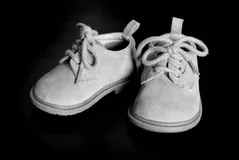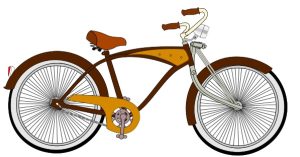You and Your Family published in 1949 is a fascinating booklet produced by the Canadian government’s National Health and Welfare department. It is a rich little 50 page document designed to explain the Family Allowance and to give advice about family income and children and their problems, to quote the cover.
From 1944-1992 the Family Allowance often called the Baby Bonus was paid monthly to mothers of children under 16 to support the raising of children. The first part of the book talks about how to apply for the allowance and sets out the amounts of money given for children of different ages.
The cheques sent each month were:
| Children under 6 | $5/ month |
| Children 6-10 | $ 6/ month |
| Children 10-13 | $7/month |
| Children 13-17 | $8/month |
They point out that this adds up to $1100 from birth to age 16 for each child. If the average family in Canada in 1949, as they tell us, had an income of $140 per month or $1680 per year, that is a good chunk of money. Consider that most families had more children than we do today and that starts to add up. They also lay out the rules and regulations pertaining to the use of Family Allowance and how it can be cancelled if the rules are not followed. It boils down to , this money must be spent on the children, on things to improve their lives. Examples are fresh fruit, clothing, holidays, education or sports equipment. The extras that enhance a child’s life.
 I remember my mom discussing how to spend the “baby bonus” and that it had to be on something worthwhile. She lamented that inflation in the 1970’s had eroded some of the spending power. While she used to be able to buy shoes or clothes for us when we were babies by the time we were pre-teens the money didn’t go very far.
I remember my mom discussing how to spend the “baby bonus” and that it had to be on something worthwhile. She lamented that inflation in the 1970’s had eroded some of the spending power. While she used to be able to buy shoes or clothes for us when we were babies by the time we were pre-teens the money didn’t go very far.
Just for comparison, the Canada Child Benefit, has now become the Family Allowance has become. Today children under 6 are given $570.00 per month and from 6-17 are given $480 per month. Still a nice chunk of money.
The brochure then spends a few pages explaining for the new mother how to budget wisely and make the family’s money do the most for the family. There are a lot of great practical tips like:
- it is okay to splurge on some things if you are frugal on most things.
- Quality not just price are key to getting the most for your money.
- Children should have an allowance and bank account as soon as they are able to manage it to learn about making good money choices. They should pay for haircuts or movies.
- Buy the best quality you can afford, don’t be fooled by ad campaigns.

- Don’t buy things just because they are on sale.
- Buy two pairs of shoes at once if you can, they will last longer than any two pairs purchased alone.
- Plan your menu in advance including using leftovers.
- Be sure you are meeting Food Guide Rules.
- Save cooking water, bones and scraps for soups and sauces.
- Buy in bulk and in season to save the most.
- Can and preserve when things are in season and cheaper.
- A cheaper cut of meat is just as nutritious as a more expensive one.
- Fruit that is imperfect is just as good as Grade A fruit.
- Figure out how to cook your meals to preserve the nutrition in it and make them taste best.
 There is a cute little story about a boy who desperately wants a bicycle but there isn’t enough money in the budget to buy it right away. “The 13 year old wanted the bicycle above everything in life at that moment. ” The parents talk about it and mother offers up the money she has squirreled away for a new carpet, because the carpet can wait but the boy deserves a bicycle. So they buy the boy his bike. The boy is thrilled. But it is important to his father that the boy understands that bicycles don’t grow on trees and that he should be grateful to his mother who made it possible. After the first day out riding his new bike, father asks his son, “Did you have a good ride on your mother’s carpet?”
There is a cute little story about a boy who desperately wants a bicycle but there isn’t enough money in the budget to buy it right away. “The 13 year old wanted the bicycle above everything in life at that moment. ” The parents talk about it and mother offers up the money she has squirreled away for a new carpet, because the carpet can wait but the boy deserves a bicycle. So they buy the boy his bike. The boy is thrilled. But it is important to his father that the boy understands that bicycles don’t grow on trees and that he should be grateful to his mother who made it possible. After the first day out riding his new bike, father asks his son, “Did you have a good ride on your mother’s carpet?”
Another paragraph that made me smile in another way was;
So you are going to have a baby. You are lucky. It is a wonderful experience and while bringing up a child is no easy job, it is one of the most exciting and worthwhile things that anyone can do. There is no career as important as motherhood, none more rewarding.
And then advice for new mothers:
 You should always remember that your child has a personality in his own right. He has psychological needs, mental, emotional and spiritual needs just much as physical needs. Behavioural difficulties are best managed if you can find out the cause behind them. It is helpful to know what kinds of behaviours are normal for certain ages.
You should always remember that your child has a personality in his own right. He has psychological needs, mental, emotional and spiritual needs just much as physical needs. Behavioural difficulties are best managed if you can find out the cause behind them. It is helpful to know what kinds of behaviours are normal for certain ages.
The book goes on to give five pages of practical advice about pregnancy, following doctor’s advice, raising babies, seeing a dentist, preventing disease, and getting vaccines. There is a multi-page list of illnesses and accidents and how to deal with them. Some of the advice is not best practice today. For example, for sunburn they suggest that you apply oil or a paste of baking soda and flour, today we would apply aloe vera gel. Another example, if your child drinks lysol they suggest to induce vomiting, give milk and castor oil and an enema today we would contact the poison control centre instead.
I found it a very interesting document, showing some of the beliefs and household wisdom of this mid-century time. While some of it is outdated, I think if I had been a new housewife in 1949 I would have found it very helpful in organizing my home and family life. Especially since the internet was 50 years away.
I wonder if government documents as helpful as this are still published?
